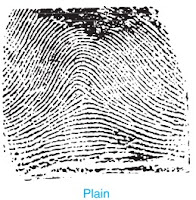Carbohydrates: Definition, Functions and Classification
What are Carbohydrates ?
Carbohydrates are defined as optically active polyhydroxy aldehydes or polyhydroxy ketones or substances which give these on hydrolysis.
It is to be noted that aldehydic and ketonic groups in carbohydrates are not present as such but generally exist in combination with one of the hydroxyl groups of the molecule in the form of hemiacetals and hemiketals respectively.
Carbohydrates include compounds like sugars, starches, glycogen, cellulose, dextrins, and gums. Though they are widely disturbed both in animal and plant kingdoms yet they are obtained mainly from plants by a process known as photosynthesis.
Role of Carbohydrates in Biological System
- One of the primary functions of carbohydrates is to provide energy to the body. Carbohydrates are broken down into glucose which enters the bloodstream then it is taken up into the body's cell and used to produce ATP. These ATP's are used by cells to perform different metabolic tasks.
- Carbohydrates can be used as stored energy in the form of glycogen which is found in the liver and muscles. These stored glucose molecules can be released into the blood to provide energy throughout the body and help to maintain normal blood sugar levels.
- The polysaccharides cellulose which is a carbohydrate act as the chief structural material of the plant cell walls.
- The polysaccharide starch which is a carbohydrate is the major reserve food material for the tiny plant till it is capable of making its food by Photosynthesis.
Classification of Carbohydrates
Carbohydrates are classified into the following classes depending upon their behavior towards hydrolysis.
1. Monosaccharides
Monosaccharides are the simplest carbohydrates that cannot be hydrolyzed into smaller molecules. Their general formula is (CH₂O)n where n=3-7. Monosaccharides that contain an aldehyde group (-CHO) are called Aldose and monosaccharides which contain a keto group is called Ketose.
Also depending upon the number of carbon atoms present in monosaccharides, are named triose (C3), tetrose (C4), pentose (C5), hexose (C6), heptose (C7), and so on.
2. Oligosaccharides
Oligosaccharides are the type of carbohydrates that on hydrolysis give 2-10 molecules of monosaccharides. Depending upon the number of monosaccharides molecules obtained from hydrolysis, they are further classified as di, tri, tetrasaccharides, etc.
1. Disaccharides
Carbohydrates which on hydrolysis give two molecules of the same or different monosaccharides are called disaccharides. Their general formula is C₁₂H₂₂O₁₁ and they are crystalline, water-soluble, and sweet compounds. For example, sucrose, maltose, lactose, etc.
2. Trisaccharides
Carbohydrates which on hydrolysis give three molecules of the same or different monosaccharides are called trisaccharides. Their general formula is C₁₈H₃₂O₁₆. For example, raffinose upon hydrolysis gives one molecule each of glucose, fructose, and galactose.
3. Tetrasaccharides
Carbohydrates that on hydrolysis give 4 molecules of the same or different monosaccharides are known as tetrasaccharides. Their general formula is C₂₄H₄₂O₂₁. For example, Stachyrose on hydrolysis gives 1 molecule each of glucose and fructose and 2 molecules of glucose.
3. Polysaccharides
Carbohydrates which on hydrolysis give a large number of monosaccharides molecules are called polysaccharides. Thus, polysaccharides may be regarded as condensation polymers in which the monosaccharides (monomers) are joined together by glycosidic linkages. Their general formula is (C₆H₁₀O₅)n where n=100-3000. For eg. Starch, cellulose, glycogen, dextrins, etc.



